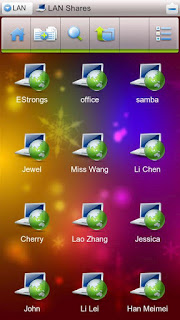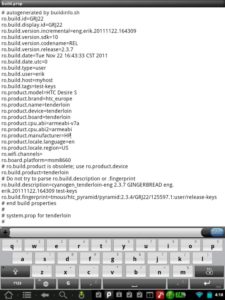 Today, most of the smartphones out there use rechargeable Lithium-ion batteries. They are found not only on cell phones, but on digital cameras, portable music players, and a lot of other electronic gadgets. The major advantages of this type of phone battery are that they have high energy density, high power output, and long lifespan. These advantages make Lithium-ion batteries perfect for portable electronic gadgets. If you ever had confusion as to what these batteries are and what their specifications meant (stuff like mAh, charging time, etc), then let me clarify these details here.
Today, most of the smartphones out there use rechargeable Lithium-ion batteries. They are found not only on cell phones, but on digital cameras, portable music players, and a lot of other electronic gadgets. The major advantages of this type of phone battery are that they have high energy density, high power output, and long lifespan. These advantages make Lithium-ion batteries perfect for portable electronic gadgets. If you ever had confusion as to what these batteries are and what their specifications meant (stuff like mAh, charging time, etc), then let me clarify these details here.
The Basic Chemistry

Look at the image that illustrates the compounds within a typical Lithium-ion battery. I have tried to speak as low-tech chemistry as possible here.
At the base of all these batteries is the basic metal, Lithium (Li). This is a soft, light metal of the alkali metal group, which means this metal is very reactive and difficult to preserve. The optimum reactivity of Lithium makes it perfect among alkali metals (that include sodium, potassium, etc) to form a good battery.
Lithium Cobalt Oxide (LiCoO2) is the most widely used compound on the anode. Cathode (negative electrode) is typically a carbon allotrope. During charging, as you can see, Lithium ions travel to the cathode along with an electron. Once fully charged, it can give out energy through a reverse discharge process illustrated in the picture.
Over-charging and over-discharging tend to create additional irreversible compounds that waste the chemical composition of the battery. It means, a part of the battery becomes pure rock if you continue to overcharge or over-discharge the battery.
Understanding Important Specifications
Lithium-ion battery technology is one of the most advanced and expensive among secondary batteries (those that can be used repeatedly after recharging). It is highly portable due to great energy density, and gives maximum power.
A. Capacity (Ampere-Hour [Ah] or Milli-Ampere-Hour [mAh])
Over time, the cellphone manufacturers have learnt to identify milli-ampere-hour (mAh) as the major measure of battery power. People who are looking for long-lasting efficient cell phone battery look at the mAh rating and talk and standby times given to purchase a device. Let me bust all the myths here. This is the measure that indicates the total charge-bearing capacity of a battery. It doesn’t indicate whether the battery has a long runtime or not.
For instance, 2000 mAh battery is capable of providing 2 ampere of current for 1 hour before fully draining or 0.2 ampere of current for 10 hours before draining completely.
This is also indicated with something called the C-rate of the battery. For instance, if 1C of a battery is 2000 mAh, it means the battery is capable of a maximum of 2000 milli-ampere of current for 1 hour. C/2 of the same battery should be 1000 mAh, and so on.
B. Specific Energy (Wh/kg)
This is an indicator of the power storage capacity of a phone battery. Also known as gravimetric energy density, this measure indicates the size-to-power ratio of a battery. Lithium-ion phone batteries have high specific energy making them perfectly portable. You can usually find the specific energy details on the battery pack itself. This can be also measured in terms of energy density (Wh/L).
C. Specific Power (W/kg)
This indicates the maximum power the battery dissipates from each kilogram of its mass. This is also measured as power density (W/L).
Specific energy and specific power can be balanced to achieve optimum results from a battery, such as high power or high durability at low power. As an analogy, think of a battery as a tank full of water. High specific energy on the battery is analogous to a big tank with small tap, while low specific energy is indicated by smaller tank with bigger tap. You cannot have both high.
Parameters of Typical Lithium-ion Batteries
Check out this table that lists important parameters of generally available Li-ion phone batteries
| Specific Energy | 110-200 Wh/kg |
| Voltage | 3.7 volts |
| Temperature range | -20° to 60° C |
| Specific Power | 250-730 W/kg |
| Self discharge | Full charge: 20-25 % at 25° C; 35 % around 60° C (monthly estimate) 40 % charge: 4 % at 25° C |
| Cycles | 400 to 1000 |
Most of the manufacturers of cell phones and tablets equip their devices with batteries of appropriate power in order to have it running long. However, the sheer mAh rating of the battery doesn’t necessarily indicate a longer running battery. You have to look at the power requirement of the device itself. This is usually given within the device’s catalog. This is dependent on the electronics used in the phone.
Usually the power requirement is given within the battery compartment of the device itself.
This is the reason why a high-mAh battery gives less talk-time than a low-mAh one. Here are a few tips to make your phone’s battery run longer.
The Memory Effect
Memory effect is typically found on certain rechargeable batteries; this makes the battery run long or short on charging based on the charging history. Certain Nickel-Cadmium (Ni-Cd) batteries retain less charge and drain faster if users charge them partially.
This has been a concern for owners of new types of batteries such as the Li-ion. However, Li-ion batteries are not affected by memory effect. You only need to charge it fully before the first use.
Tips & Guidelines
1. Do not overcharge the battery as it will lead to unnecessary irreversible chemical reactions, reducing specific energy of the battery.
2. Do not let the battery to drain the charge fully as it will again lead to unnecessary compounds being produced.
3. Dispose of Li-ion batteries very carefully. Either send the batteries back to the company on re-calls, or dispose them off carefully.
4. Do not let the battery operate beyond its mentioned temperature range. Placing the cellphone in direct sunlight or nearby hot equipment could cause dangers like explosion.
5. Li-ion batteries drain their total charge and lifespan over time whether you use it or store it. Hence, it’s not advisable to store them for prolonged periods of time (such as a year or two).
Conclusion
I have tried to give maximum useful information about Li-ion batteries. Most of the information presented here are fairly technical although care has been taken to incorporate laymen. These batteries power most of the smartphones and tablets available in the market today, and I hope people will find this article useful.
[Image credit: Panasonic]





